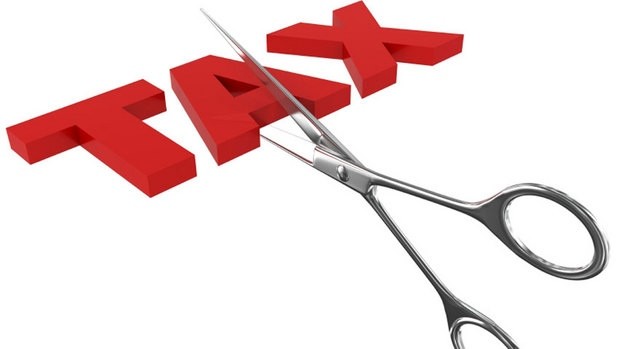How to Cut Your Tax Bill_1
Post on: 28 Апрель, 2015 No Comment

Photo credit: Yarek Waszul
Y ou might call it Smack Your Forehead Syndrome: that sinking feeling at tax time as you realize your company would be shelling out fewer tax dollars if only you had done some preparation up front.
Immunizing yourself against SYFS requires doing tax planning to minimize the amount of tax owed. The best time to start is now, because its the steps you take over the course of your fiscal year that will generate the tax savings at the end. Fortunately, basic tax planning is often not overly complicated, says Sylvain Campeau, senior tax partner at Collins Barrow Ottawa LLP. And it goes straight to your bottom line, straight into your jeans.
Here are five pre-Q4 tax-planning strategies to guard against a bout of SYFS:
Win with losses
If you control two or more businesses (on your own or with your spouse), you cant write off the losses of one directly against the gains of another. Instead, advises Bryce McGee, tax principal at Vancouver-based chartered accountancy D+H Group LLP, plan to marry the profits of one firm (which will owe taxes) with the losses of another (which wont owe any). That way the profitable company falls into the lowest tax bracket possible.
You might, says McGee, merge a profitable firm with an unprofitable one. You could transfer an administrative function such as accounting into the money-losing firm, which would generate a profit on this function by charging the profitable company for it. Or, if the profitable firm plans to sell an asset (e.g. real estate, equipment or marketable securities) that has appreciated in value, it can sell the asset to the money-losing company. The latter then sells the asset to a third party at fair value. This will realize the assets gain in value, but the firms loss will offset the tax.
Remunerate yourself right
How you compensate yourself has big tax implications. Bruce Ball, national tax partner at BDO in Toronto, says entrepreneurs who fail to plan how theyll meet their personal spending needs often wind up borrowing from their firms. He warns that if you dont repay the loan within a year of the end of the fiscal year in which you borrowed it, youll need to include the balance owing as income on your personal tax return—and your firm wont get a corresponding deduction as an expense.
Ball advises that at the start of each fiscal year you think about what your companys taxable profit will be, how much money youll need personally and the best way to take it out. Then you can determine the right mix of salary and dividends, which will require complex calculations that youll almost certainly need a tax specialist to handle.
Ball says these calculations require comparing the taxes youll pay on a dividend, both corporate and personal, with the personal taxes youll pay on a salary. A mix of salary and dividend is often the best option. To work out the best split, hell crunch numbers for a scenario such as: What happens if I take just some of the profit as a salary, pay corporate tax on the rest of it and then pay the after-tax amount as a dividend?
McGee says you can ease cash-flow crunches by developing your compensation plan in tandem with company forecasts. If youre expecting a revenue drop, you may want to pay dividends each month instead of salaries, he says. Youll save on the monthly payroll withholdings associated with salaries and conserve cash flow. And youll defer tax until the next April, when youll pay personal tax on the dividends.
Keep your books in order
Many entrepreneurs are so busy they neglect their paperwork, but it pays to stay on top of your books year-round, says Colleen Gibb, president of Ancaster, Ont.-based Gibb Widdis Chartered Accountants Professional Corp. She advises tracking profits monthly, or even weekly, so you learn much sooner how much tax youll owe. If you see that revenue is falling short of last years, you can reduce your tax installment payments to boost cash flow.
Gibb recommends printing an aged receivables list at least monthly—a cinch with most accounting software. Not only is it much easier to collect an amount thats only a month or two overdue, she says, but youll become more aware of bad debts you can write off when its time to file your tax return.

Exploit the government
Theres a wide and ever-changing array of federal and provincial tax programs and incentives. Investigate what your firm qualifies for, especially if youre planning a big project such as an expansion, says Campeau. Better yet, hire a consultancy to do this; reputable ones work on commission, so your risk is minimal.
The biggest underused program for business is the Scientific Research and Experimental Development (SR&ED) federal tax incentive, which offers cash refunds and/or tax credits on R&D work done in Canada. If you apply to this program, you should take its rules into account when planning how to compensate yourself or any employees who play a role in the research and own shares in your firm.
Any shareholder involved in SR&ED shouldnt take income in the form of dividends, says Julie Bond, president of Bond Consulting Group Inc. a Toronto-based SR&ED consultancy. Thats because your firm cant claim dividends paid to these research participants as an R&D expense, which it can for salaries. And Bond says salary splitting—in which you divide your salary with a spouse on your payroll to reduce the overall tax—can be a bad move if youll be filing an SR&ED claim. Unless the spouse is involved in the research, your firm wont be able to claim his or her salary as an expense.
James Perly, president of Perly Consulting Group Inc. a Toronto-based specialist in government help for business, advises planning your R&D project so you use employees rather than contractors, because the refund is about 70% (depending on the province), versus 45% for individuals working on contract for you. If you must hire contractors, he says, ensure that the contract states your firm owns the resulting intellectual property.
Shop wisely
Many firms dont consider the timing of big purchases. Buy major capital assets, such as computers, trucks or a building at the end of your fiscal year rather than wait until the new one starts, advises Ed Scheck, a partner at Toronto-based accountancy Hogg Shain & Scheck Professional Corp. That way youll get to claim the capital cost allowance (CCA for depreciation) as if you had owned the asset for your entire fiscal year.
Be aware that you can claim only 50% of the usual CCA amount in the first year, and the asset must be put into use, not in storage or waiting to be installed. And this is only a good strategy if you were going to make the purchase anyway, says Scheck. Doing it just to defer tax is not a good use.














